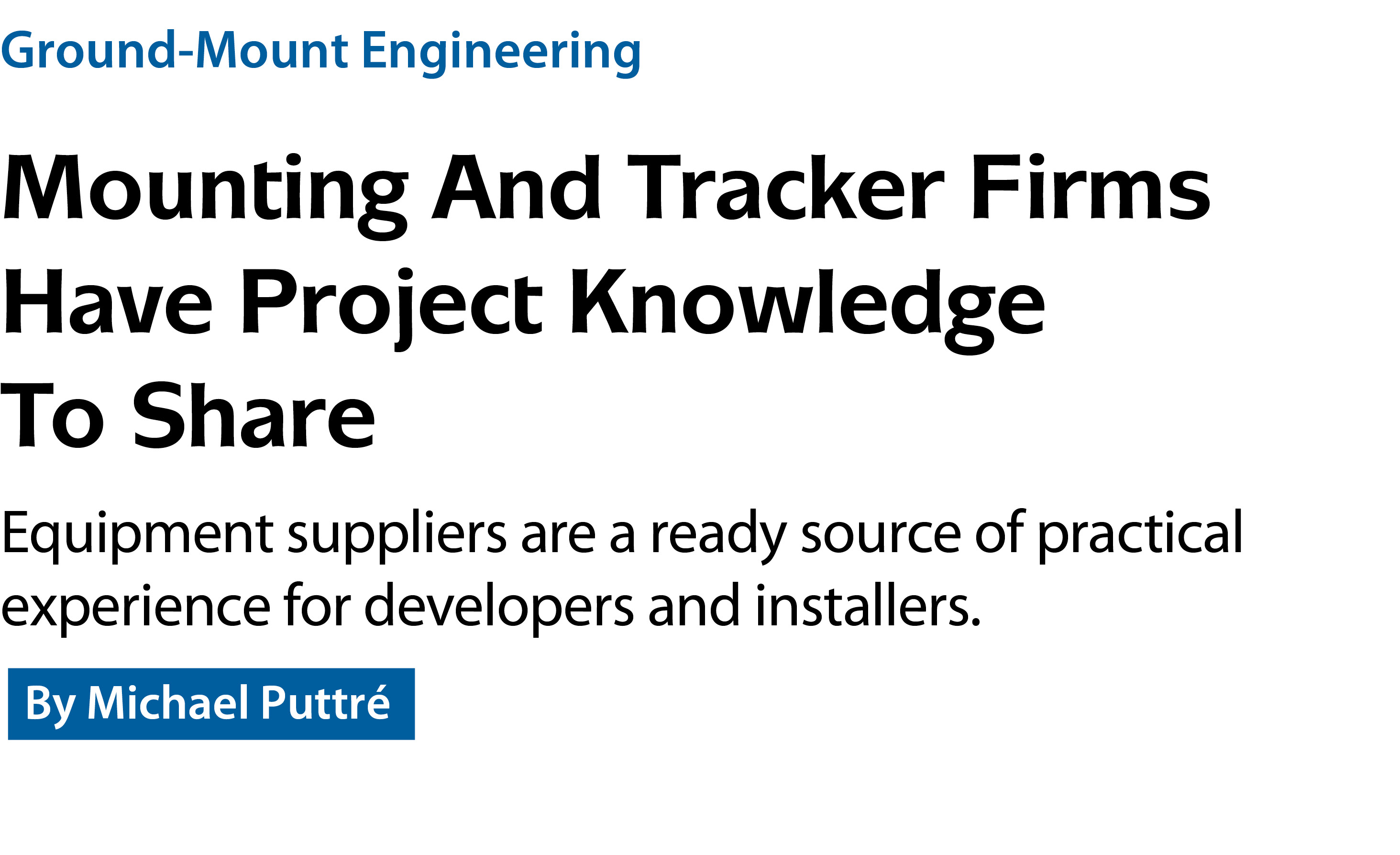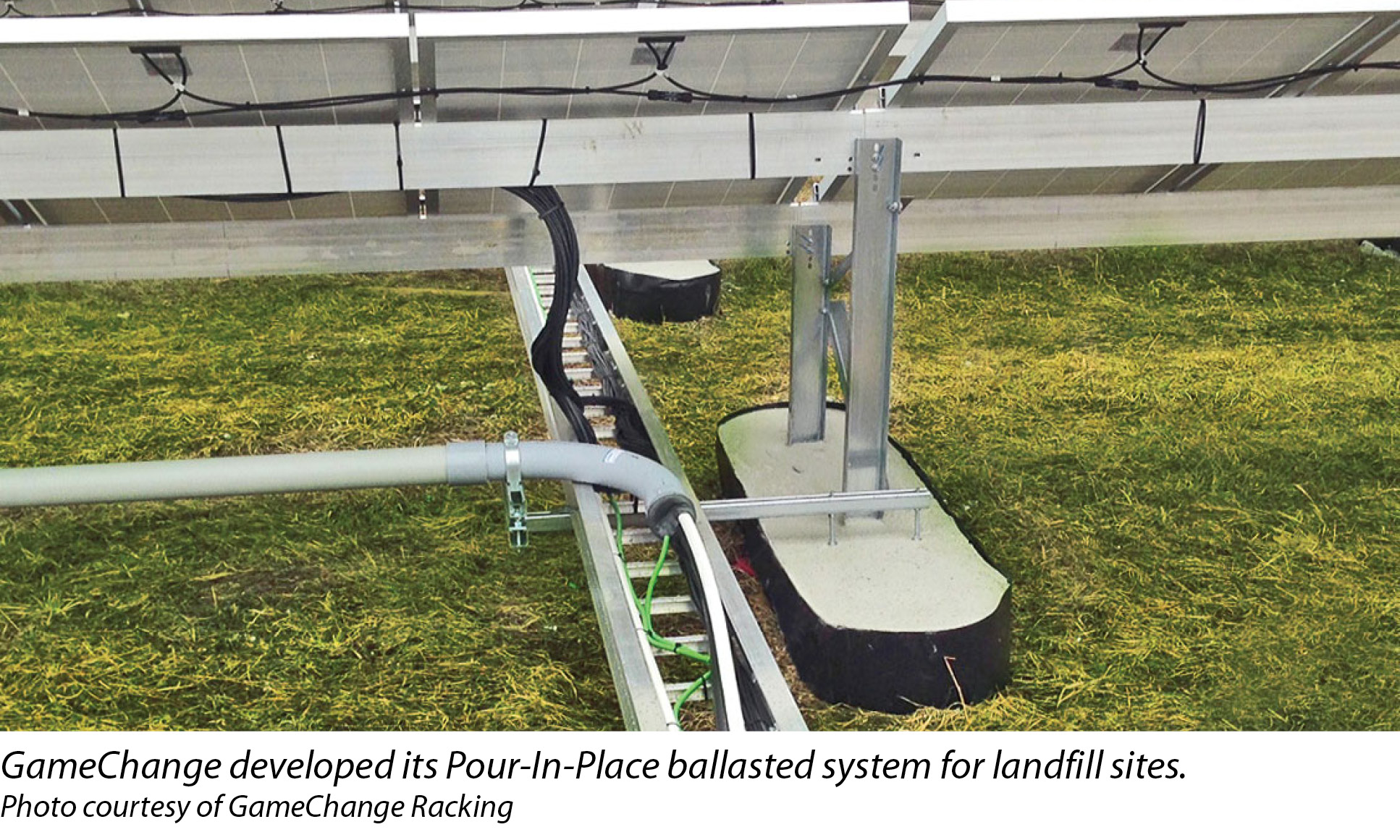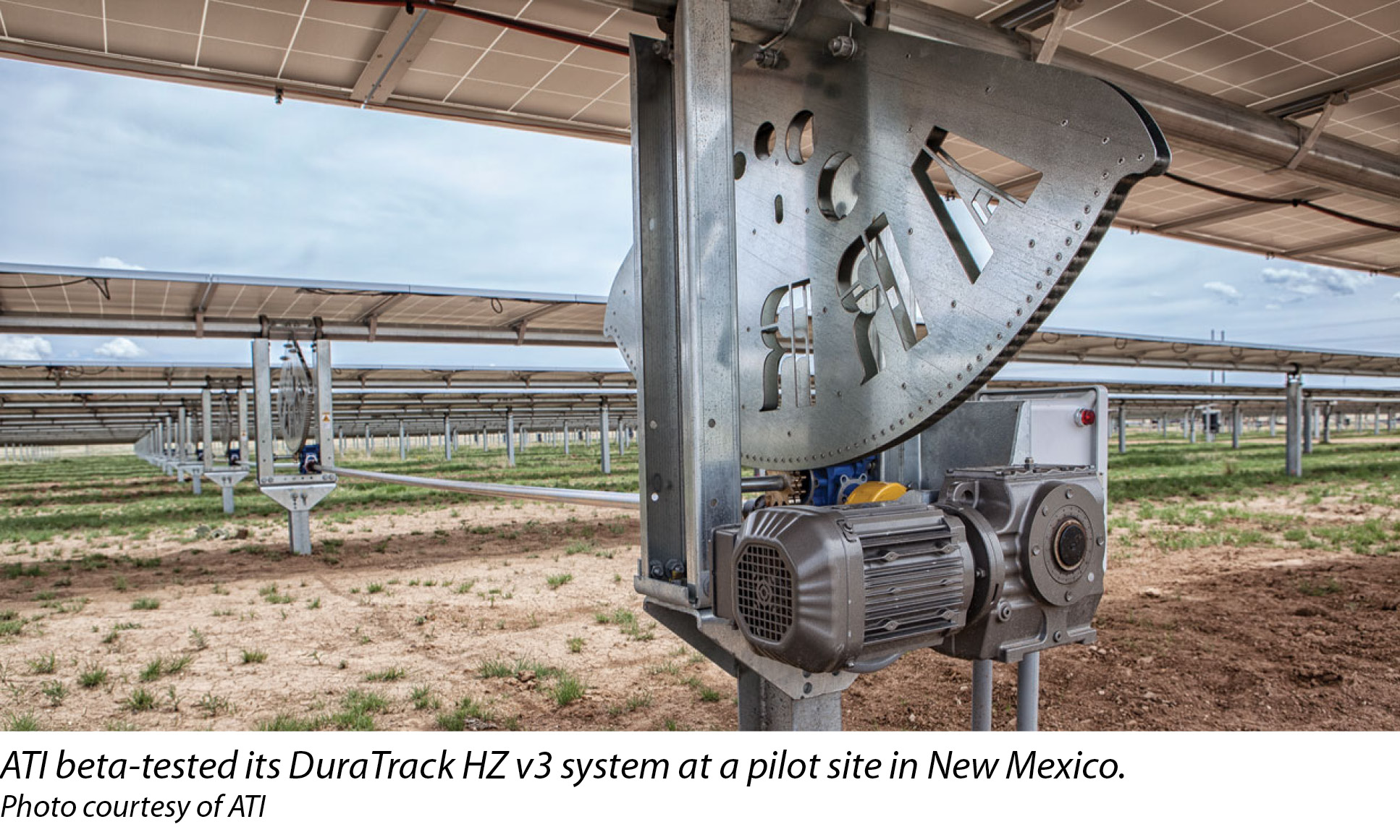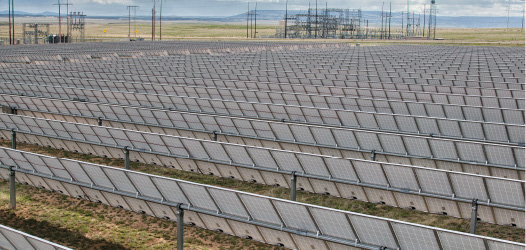

301 Moved Permanently
There is no escaping the fact that providers of ground-mount structures for photovoltaic arrays, be they fixed-tilt or tracking, are concerned about pricing, first and foremost.
Any discussion about the design engineering and the mechanics of their systems quickly focuses on how manufacturers are allocating engineering talent to the problem of removing cost from their products. Whether it is removing materials, employing alternate materials or arranging components so as to reduce the labor required to deploy them, suppliers in this space are primarily concerned with getting both project developers and engineering, procurement and construction (EPC) firms to specify them in their bids.
“When you look at a racking company on its own, what is it really providing other than, frankly, bent metal?” says Aaron Faust, vice president of business development at Applied Energy Technologies (AET), a Michigan-based designer and manufacturer of mounting and racking systems. “It’s a brutal way to say it. So, what is the value of the racking supplier in the whole supply chain?”
Faust is rather begging the question. As he will readily tell you, metal has to be bent just so in order to support a PV array according to required codes and standards. All of the suppliers still standing in this market have to maintain myriad certifications to satisfy authorities having jurisdiction (AHJs) and EPCs with enough throw-weight to demand them. Moreover, PV structure suppliers must also compete on quality.
“The value that we bring is the engineering support behind the installation of the system on the site,” Faust says. “It is the constant maintenance of certificates and making sure that the engineering behind our wind analysis on the roof and on the ground is up to date and is actually matching what is going on. It is maintaining the warranty. It is also the implementing of the manufacturing process: the managing of the supply base and the logistics to get the product to the site and to train and support the crews.”
Although the engineering effort required to accomplish this is primarily a matter of business, the knowledge it produces also has value for the developer and installer. In order to produce a product that satisfies both AHJs and the marketplace, a manufacturer must have talent with practical knowledge of structural stresses, wind and snow loads, soil chemistry, and any number of other environmental and site-specific factors that may affect a PV array over 20 or 30 years. Certainly, such information has uses other than making a product cheaper, better and faster to install.

Field feedback
Richard Pantel, president of Virginia-based Rack10 Solar, says he migrated into the business of manufacturing racking and mounting systems through his engineering practice, Princeton Engineering and Solar. Both firms exist as separate entities, but occasionally the twain do meet.
“Sometimes Princeton is hired to do the balance of the engineering,” Pantel says. “Sometimes Rack10 just sells the rack. But it’s great when we can sell an entire package because there is a lot of synergy in the overall project. When we are lucky enough to have a client use our racks as well as our engineering services, it’s a double bonus.”
Of course, the bonus is a financial one. However, Pantel says the benefits also extend to the relationship between product design and project design.
“After you come up with a concept, you engineer it, prove it in the lab and then prove it in the field,” Pantel says. “We tend to look at this as a holistic approach.”
Providers of supporting structures for ground-mount arrays tend to have a high percentage of engineers in house because of the rigors of producing marketable systems. Unlike many product-dependent industries, solar electric systems development requires products that resist cookie-cutter approaches to operational use.
“Every job in the commercial and utility space is a stand-alone project,” says AET’s Faust. “There is no cookie-cutter in the space that we play in. I would challenge anyone who says there are cookie-cutters in the residential space.”
So, every site is different. At the same time, because margins are so tight, manufacturers clearly cannot afford to create custom products on a project-by-project basis.
“We try to design all of our components so that they are more or less universal,” says John Williamson, engineering manager at Albuquerque, N.M.-based tracker manufacturer Array Technologies Inc. (ATI). “What our engineers do is take these universal components and work with the customer to determine site requirements: what the module is, what the corrosion levels are, and what the wind or snow requirements are. From this library of components, the engineers will assemble a system that will work with the client’s specifications.”

In May, ATI commissioned a 1.3 MW solar plant for the Springer Electric Cooperative in northern New Mexico that served as a pilot project for its new DuraTrack HZ v3 single-axis tracking system. Williamson says the company’s engineers performed all of the structural testing and quality assurance prior to the beta release for the pilot installation. ATI has the ability to set up and test structural components in house, enabling the engineers to go through many design iterations in the lab before deploying at the beta site.
Williamson says ATI had members of its engineering team and its project management team on-site for every phase of the pilot construction. “We were watching as the installers were attaching to the foundation and when they were putting all the components onto the structural tubes and all of the drivetrain assemblies so we could identify if there were any steps in our planned installation that were not working as expected or were slower than expected,” he says. “We made changes based on these observations to make sure that when we deploy on a larger scale, it would go a lot better.”
The last thing a manufacturer wants is for a customer to specify its product and then report that it is losing money because of an unexpected problem. For this reason, the goals of the supplier and the project developer are in sync.
Andrew Worden, founder and CEO of GameChange Racking in New York City, says the manufacturer’s engineering perspective can actually help open up new markets for solar that had been unreachable due to price. Worden says his idea for the company’s Pour-In-Place ballasted ground-mount system came from an observation of how concrete and forms are managed in Manhattan building construction.
“Ballasted ground used to be so expensive,” Worden says. “It was such an added cost that nobody used it, except in landfill projects where you could get really good economic incentives that would justify paying the huge premiums.”
Worden says he used his racking company’s product design expertise to enable his solar development company, Soltas Holdings, to successfully build a 6.25 MW project last year using the technology on a site that was rocky, uneven and otherwise unsuitable for a posted ground-mount system.
For all but the few, however, product development and project development are distinct enough that specialists in each wear separate skins. AET’s Faust points out that, for one thing, maintaining all of the AHJ approvals for certification, warranties, product design version control and component lot control ends up becoming a large part of any manufacturer’s business. What developer would really want to take that on if it didn’t have to?
“We have smart customers; they could do the engineering,” Faust says. “They could do all of the things required to put a structure in the field. But, they just don’t have the resources to do it. They don’t want to take that risk on. They will leave that to the experts.”
Ground-Mount Engineering
Mounting And Tracker Firms Have Project Knowledge To Share
By Michael Puttré
Equipment suppliers are a ready source of practical experience for developers and installers.


si body si body i si body bi si body b
si depbio
- si bullets
si sh
si subhead
pullquote
si first graph
si sh no rule
si last graph